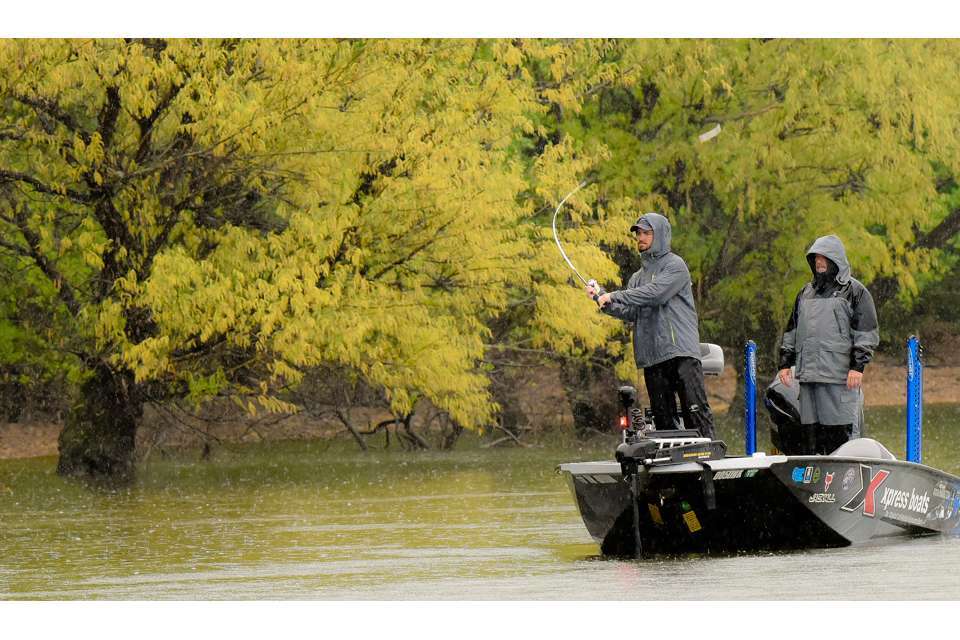
Back when I was just a kid I fished Lake Keokee in Virginia. It’s small, but I learned a lot about bass fishing because it’s covered over with standing timber of all kinds and descriptions. I learned how to pick out the productive places in a large patch of trees, and I learned how to find the depth at which the bass were holding the day I was fishing.
We’ll start with the obvious. Pulling into several acres of standing timber and throwing at everything in sight is a waste of time. You’ll probably not catch anything, and even if you do catch one or two it’ll be on accident. Fishing standing timber efficiently requires you to pick the right trees and concentrate on them, and only on them.
Basically you’re not going to do anything much different from what you do fishing anything else. You’re looking for something irregular, something that’s different. Maybe it’s a point made by the trees. Maybe it’s a tree that’s bigger than the ones around it. Maybe it’s smaller. Maybe it’s older, or more rotten. Whatever it is it’ll catch your eye as you look around. You’ll know it as soon as you see it.
Once I find that different tree I usually tie on a 10-inch ribbon tail worm. If the water’s shallow, I’ll go with a 1/4-ounce sinker. If it’s deep, I’ll go with a 3/8-ounce sinker. My worm choice is a Googan Baits Mondo Worm. They’re thinner than most other long worms. I like that.
I toss it out making sure it hits the tree and then I let it fall straight down to the bottom. The hitting the tree part is very important. That noise gets their attention, and that’s the first step towards catching them.
Once I get a bite or two I can tell where the fish are holding — up near the top, part of the way down or on the bottom. That gives me the information I need to pick another lure that might be more efficient.
Spinnerbaits and swimbaits are pretty good choices when the bass are up, off the bottom. You can bring them back horizontal at almost any depth. I usually try to hit the tree with them on the way back but that’s not really the most important thing. Depth is what matters the most. The closer you can get to exactly where they’re at the more bass you’ll catch. Don’t try to force them to move up or down. That rarely works.
If they’re on the bottom, you can keep fishing with your worm or you can switch to a jig or maybe a vibrating jig brought back right along the bottom. Again, it’s nice to hit the wood, but it’s more important to be right at the base of the tree and right on the bottom.
Final thought No.1: If the water’s super deep, the bass will almost always suspend somewhere up the tree.
Final thought No.2: If you find a submerged treetop, the bass will almost always hold over, or in, the top of it.
Don’t try to fish every tree in a patch of standing timber. Pick it apart, and fish it correctly. You’ll catch ‘em.





